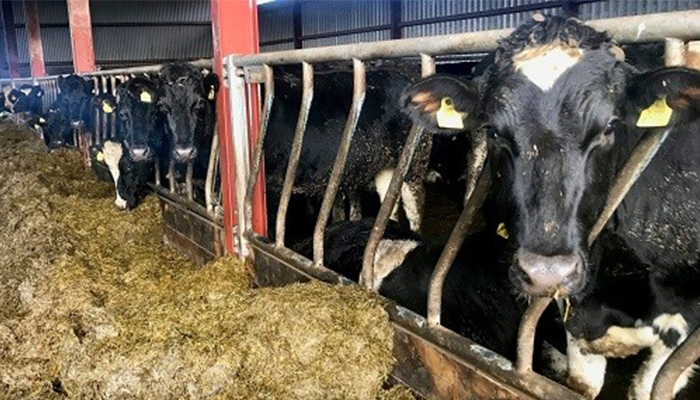27 September 2023
Getting ready for housing on DairyBeef 500 farms

With daylight hours declining and heavy rainfall over recent weeks, the housing of stock is under way or just around the corner on many farms throughout the country. Tommy Cox, DairyBeef 500 Advisor, reports that this is also the case among DairyBeef 500 participants.
Winter is costly time on farm. Achieving an adequate level of weight gain over the course of winter is crucial, especially given that some animals will be coming in slightly lighter than desired after a particularly difficult summer. Below are a few key areas that warrant attention over the next few days, as farmers prepare for the winter ahead.
Feed budget
When it comes to winter feed, there are two critical measures – quantity and quality. The saying ‘you’re better looking at it than looking for it’ is particularly relevant here. Cast your mind back to the winter of 2012/2013, where widespread fodder shortages affected many farmers in the country. Now is the time for to access the situation on your own farm to prevent a similar event from occurring next spring.
This can be done by completing a simple fodder budget. Completing a fodder budget is a two-part process; it involves working out how much feed you have on you farm and how much feed you need. There are a number of fodder budgeting tools available on the Teagasc website to assist in the completion of a budget for your own individual farm.
Silage analysis
Completing silage analysis is critical to ensure that the nutritional requirements of stock are met and that the desired level of performance is achieved over the winter period. In the grand scheme of things, we are not good silage makers. Silage quality of around 65% dry matter digestibility (DMD) is the norm on many farms across the country.
This silage is only capable of supporting a daily live weight of 0.3-0.4kg/day for stock without the inclusion of meal. Visual assessment alone is not adequate to determine silage quality and laboratory testing is recommended, as it provides accurate information on silage nutritive value and preservation and informed concentrate feeding decisions can be made.
When taking silage samples, they need to be collected accurately and precisely to ensure correct results; poorly taken silage samples often lead to inaccurate results. A period of 5-6 weeks should elapse between ensiling and sampling. A long core sampler should be used with 3-5 cores from well-spaced points on or between diagonals on the pit surface should be sampled. Alternatively sample an open pit by taking nine grab samples in a ‘W’ pattern across the pit face. When testing bales, a number of samples from each batch of bales made must be taken in order to get a representative sample.
Access a factsheet on silage quality and concentrate supplementation from the DairyBeef 500 team here.
Lying and feeding space
Farmers are often guilty of overstocking sheds. While sheds are expensive to build, overstocking has been shown to reduce live weight gain by up to 20% – leading to longer finishing times and a more expensive finishing period.
Ensure finishing cattle have at least 2.5m2 of lying space and 0.5-0.6m of feed space. Weanlings need at least 1.5m2 of lying space and 0.5m of feed space where concentrates are been fed. As stock grow over the winter months, farmers need to monitor this and reduce stocking rate if required.
Water
Ensuring clean, fresh drinking water is every bit as important as good quality silage or any dosing programme. Cattle have a huge requirement for water while housed. Water troughs should be checked daily. If there is any sign of any soiling with either animal waste or feed, they should be cleaned immediately.
Parasite Control
Parasites can have a significant impact on animal performance and, with housing been the most expensive time for animals, it is important stock are free from burdens to prevent any impact in performance. About two weeks pre housing, all animals should be treated for lung worm to ensure they are clean of any burden before housing. Post housing treatments for fluke, stomach worms are recommended.
For more information on Teagasc’s DairyBeef 500 Campaign, click here.
